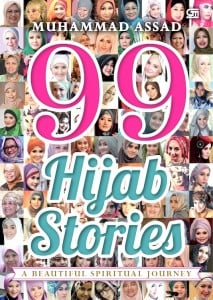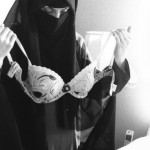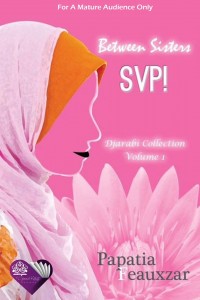The recent debates on Quebec’s Charter of Values and on hijabis in Singaporean workplaces remind me of a woman that I know. Her name is Dr. Lailiyya.
She was born in a small town in Java, the youngest girl of twelve children. When she was little, she suffered from polio. Her poor parents were unable to obtain medication for her, so little Lailiyya grew up with a deformed leg. In order for her to be able to attend school, Lailiyya’s brother had to carry her on his back to school and back.
Nevertheless, Lailiyya’s intelligence outshone her classmates and she was admitted to one of Indonesia’s most reputable schools of medicine. However, being a small-town girl, she was not used to the aggressive competition of the big city, and failed nearly all of her classes in her first year at the university.
With much hard work and determination, though, Lailiyya was able to finish her degree and pursue a further specialization in neurology. While she was studying for her second degree, she took classes in acupuncture to complement her education. Today, Dr. Lailiyya is a respected neurologist at a major city in Indonesia. Her knowledge of Western and Eastern medical concepts and techniques makes her a highly sought-after professional in her field.
I know her story well because Dr. Lailiyya is my aunt, my father’s youngest sister.
I was seven when she first arrived at our house as a new university student. Her room was situated next to mine on the second floor of our house; with her atrophied leg, she had to struggle to climb the stairs to reach it. I watched her cry when she nearly failed her first year. Afterwards, I witnessed her immense hard work to finish her education, burning the midnight oil month after month, year after year. When I showed signs of giving up with my math homework, my mom used to refer to my aunt and say, “If she could do it, you can do it too.”
In spite of her struggles, my family can see that my aunt was born for the field of medicine, and the desire to care for others seems to be in her blood. To her nieces, she used to passionately share stories about all sorts of exotic diseases that she treated in the jungle of Sumatra, where she rendered her service for two years – without electricity. Even today, with her packed schedule as a healthcare practitioner, she is sure to drop by within minutes whenever one of our family members falls sick.
I find it ironic to think that someone like my aunt will have no opportunity to pursue her calling in places such as Quebec or Singapore (I have a similar story concerning a hijabi cousin of mine, who is a nurse). Not because of her physical disability or because she is not hard working enough or educated enough, but only because of a piece of fabric on her head.
I can’t help thinking of the many lives that she has touched and that have benefited from her expertise, and how much the world would miss out on the valuable services of many doctors, nurses, teachers as well as other professionals if a policy like the Quebec’s Charter of Values is in place. As such, this policy is not only discriminatory to the subjects who are on the receiving end of the ban but also to public service as a whole.

In the case of my aunt, for example, her hijab is merely the proverbial icing on the cake and has little to do with her struggles and achievements in a society where wearing the hijab is seen as quite normal.But to my incredulity, even this society has a perpetual infatuation with “heroines in hijab”. Books like 99 Hijab Stories, for example, are titled in such a way to imply that hijab-wearing women are a monolithic group of women with life experiences that are defined by their headscarves. Undoubtedly, many of these women have a spiritual connection with their headscarves. Additionally, for the record, I have nothing against stories of hijab journeys. But to title a book about women from different walks of life and put them under a banner based solely on their attire seems to belittle the struggles, accomplishments and personalities of these women.
Dr. Lailiyya is a hijab-wearing woman. She also has one leg that is smaller than her other one. Her real story, though, is much bigger than any pink-painted vignette that focuses on her outer appearance.
















